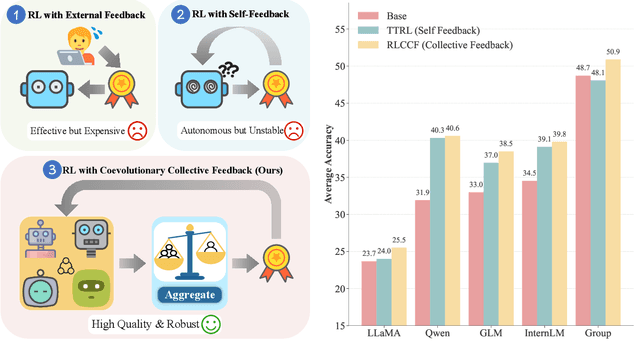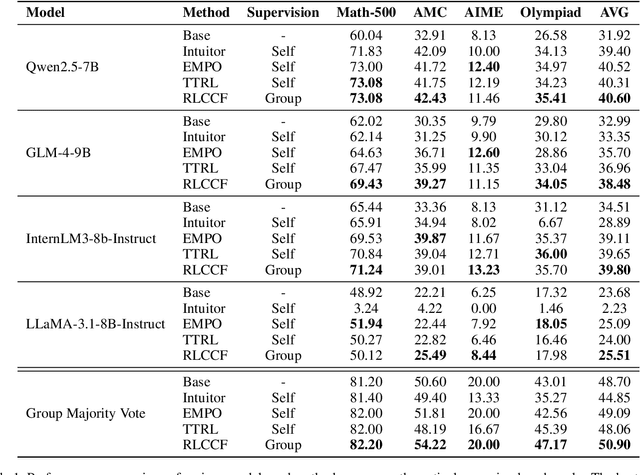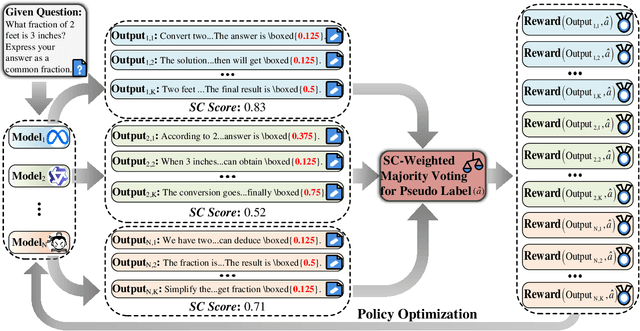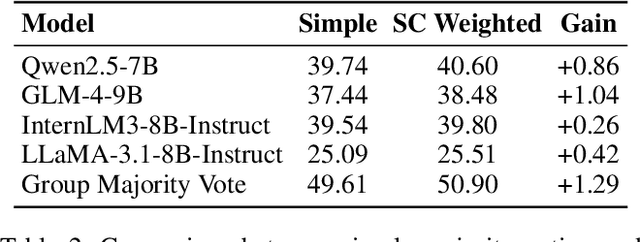Tao Chen
IEEE Fellow
EGM: Efficiently Learning General Motion Tracking Policy for High Dynamic Humanoid Whole-Body Control
Dec 22, 2025Abstract:Learning a general motion tracking policy from human motions shows great potential for versatile humanoid whole-body control. Conventional approaches are not only inefficient in data utilization and training processes but also exhibit limited performance when tracking highly dynamic motions. To address these challenges, we propose EGM, a framework that enables efficient learning of a general motion tracking policy. EGM integrates four core designs. Firstly, we introduce a Bin-based Cross-motion Curriculum Adaptive Sampling strategy to dynamically orchestrate the sampling probabilities based on tracking error of each motion bin, eficiently balancing the training process across motions with varying dificulty and durations. The sampled data is then processed by our proposed Composite Decoupled Mixture-of-Experts (CDMoE) architecture, which efficiently enhances the ability to track motions from different distributions by grouping experts separately for upper and lower body and decoupling orthogonal experts from shared experts to separately handle dedicated features and general features. Central to our approach is a key insight we identified: for training a general motion tracking policy, data quality and diversity are paramount. Building on these designs, we develop a three-stage curriculum training flow to progressively enhance the policy's robustness against disturbances. Despite training on only 4.08 hours of data, EGM generalized robustly across 49.25 hours of test motions, outperforming baselines on both routine and highly dynamic tasks.
M-GRPO: Stabilizing Self-Supervised Reinforcement Learning for Large Language Models with Momentum-Anchored Policy Optimization
Dec 15, 2025Abstract:Self-supervised reinforcement learning (RL) presents a promising approach for enhancing the reasoning capabilities of Large Language Models (LLMs) without reliance on expensive human-annotated data. However, we find that existing methods suffer from a critical failure mode under long-horizon training: a "policy collapse" where performance precipitously degrades. We diagnose this instability and demonstrate that simply scaling the number of rollouts -- a common strategy to improve performance -- only delays, but does not prevent, this collapse. To counteract this instability, we first introduce M-GRPO (Momentum-Anchored Group Relative Policy Optimization), a framework that leverages a slowly evolving momentum model to provide a stable training target. In addition, we identify that this process is often accompanied by a rapid collapse in policy entropy, resulting in a prematurely confident and suboptimal policy. To specifically address this issue, we propose a second contribution: an adaptive filtering method based on the interquartile range (IQR) that dynamically prunes low-entropy trajectories, preserving essential policy diversity. Our extensive experiments on multiple reasoning benchmarks demonstrate that M-GRPO stabilizes the training process while the IQR filter prevents premature convergence. The combination of these two innovations leads to superior training stability and state-of-the-art performance.
Towards Effective and Efficient Long Video Understanding of Multimodal Large Language Models via One-shot Clip Retrieval
Dec 09, 2025Abstract:Due to excessive memory overhead, most Multimodal Large Language Models (MLLMs) can only process videos of limited frames. In this paper, we propose an effective and efficient paradigm to remedy this shortcoming, termed One-shot video-Clip based Retrieval AuGmentation (OneClip-RAG). Compared with existing video RAG methods, OneClip-RAG makes full use of the merits of video clips for augmented video understanding in terms of both knowledge integrity and semantic coherence. Besides, it is also equipped with a novel query-guided video chunking algorithm that can unify clip chunking and cross-modal retrieval in one processing step, avoiding redundant computations. To improve instruction following, we further propose a new dataset called SynLongVideo and design a progressive training regime for OneClip-RAG. OneClip-RAG is plugged into five recent MLLMs and validated on a set of long-video benchmarks. Experimental results not only show the obvious performance gains by OneClip-RAG over MLLMs, e.g., boosting InternLV2 8B and Qwen2-VL 7B to the level of GPT-4o on MLVU, but also show its superior efficiency in handling long videos. e.g., enabling LLaVA-Video understand up to an hour of videos in less than 2.2 minutes on a single 4090 GPU.
Medal S: Spatio-Textual Prompt Model for Medical Segmentation
Nov 17, 2025Abstract:We introduce Medal S, a medical segmentation foundation model that supports native-resolution spatial and textual prompts within an end-to-end trainable framework. Unlike text-only methods lacking spatial awareness, Medal S achieves channel-wise alignment between volumetric prompts and text embeddings, mitigating inaccuracies from resolution mismatches. By preserving full 3D context, it efficiently processes multiple native-resolution masks in parallel, enhancing multi-class segmentation performance. A lightweight 3D convolutional module enables precise voxel-space refinement guided by both prompt types, supporting up to 243 classes across CT, MRI, PET, ultrasound, and microscopy modalities in the BiomedSegFM dataset. Medal S offers two prompting modes: a text-only mode, where model predictions serve as spatial prompts for self-refinement without human input, and a hybrid mode, incorporating manual annotations for enhanced flexibility. For 24-class segmentation, parallel spatial prompting reduces inference time by more than 90% compared to sequential prompting. We propose dynamic resampling to address target-patch ratio imbalance, extending SAT and nnU-Net for data augmentation. Furthermore, we develop optimized text preprocessing, a two-stage inference strategy, and post-processing techniques to improve memory efficiency, precision, and inference speed. On the five-modality average on the validation set, Medal S outperforms SAT with a DSC of 75.44 (vs. 69.83), NSD of 77.34 (vs. 71.06), F1 of 38.24 (vs. 24.88), and DSC TP of 65.46 (vs. 46.97). Medal S achieves excellent performance by harmonizing spatial precision with semantic textual guidance, demonstrating superior efficiency and accuracy in multi-class medical segmentation tasks compared to sequential prompt-based approaches. Medal S will be publicly available at https://github.com/yinghemedical/Medal-S.
Light over Heavy: Automated Performance Requirements Quantification with Linguistic Inducement
Nov 05, 2025Abstract:Elicited performance requirements need to be quantified for compliance in different engineering tasks, e.g., configuration tuning and performance testing. Much existing work has relied on manual quantification, which is expensive and error-prone due to the imprecision. In this paper, we present LQPR, a highly efficient automatic approach for performance requirements quantification.LQPR relies on a new theoretical framework that converts quantification as a classification problem. Despite the prevalent applications of Large Language Models (LLMs) for requirement analytics, LQPR takes a different perspective to address the classification: we observed that performance requirements can exhibit strong patterns and are often short/concise, therefore we design a lightweight linguistically induced matching mechanism. We compare LQPR against nine state-of-the-art learning-based approaches over diverse datasets, demonstrating that it is ranked as the sole best for 75% or more cases with two orders less cost. Our work proves that, at least for performance requirement quantification, specialized methods can be more suitable than the general LLM-driven approaches.
Unveiling Many Faces of Surrogate Models for Configuration Tuning: A Fitness Landscape Analysis Perspective
Sep 26, 2025Abstract:To efficiently tune configuration for better system performance (e.g., latency), many tuners have leveraged a surrogate model to expedite the process instead of solely relying on the profoundly expensive system measurement. As such, it is naturally believed that we need more accurate models. However, the fact of accuracy can lie-a somewhat surprising finding from prior work-has left us many unanswered questions regarding what role the surrogate model plays in configuration tuning. This paper provides the very first systematic exploration and discussion, together with a resolution proposal, to disclose the many faces of surrogate models for configuration tuning, through the novel perspective of fitness landscape analysis. We present a theory as an alternative to accuracy for assessing the model usefulness in tuning, based on which we conduct an extensive empirical study involving up to 27,000 cases. Drawing on the above, we propose Model4Tune, an automated predictive tool that estimates which model-tuner pairs are the best for an unforeseen system without expensive tuner profiling. Our results suggest that Moldel4Tune, as one of the first of its kind, performs significantly better than random guessing in 79%-82% of the cases. Our results not only shed light on the possible future research directions but also offer a practical resolution that can assist practitioners in evaluating the most useful model for configuration tuning.
HiPhO: How Far Are (M)LLMs from Humans in the Latest High School Physics Olympiad Benchmark?
Sep 10, 2025



Abstract:Recently, the physical capabilities of (M)LLMs have garnered increasing attention. However, existing benchmarks for physics suffer from two major gaps: they neither provide systematic and up-to-date coverage of real-world physics competitions such as physics Olympiads, nor enable direct performance comparison with humans. To bridge these gaps, we present HiPhO, the first benchmark dedicated to high school physics Olympiads with human-aligned evaluation. Specifically, HiPhO highlights three key innovations. (1) Comprehensive Data: It compiles 13 latest Olympiad exams from 2024-2025, spanning both international and regional competitions, and covering mixed modalities that encompass problems spanning text-only to diagram-based. (2) Professional Evaluation: We adopt official marking schemes to perform fine-grained grading at both the answer and step level, fully aligned with human examiners to ensure high-quality and domain-specific evaluation. (3) Comparison with Human Contestants: We assign gold, silver, and bronze medals to models based on official medal thresholds, thereby enabling direct comparison between (M)LLMs and human contestants. Our large-scale evaluation of 30 state-of-the-art (M)LLMs shows that: across 13 exams, open-source MLLMs mostly remain at or below the bronze level; open-source LLMs show promising progress with occasional golds; closed-source reasoning MLLMs can achieve 6 to 12 gold medals; and most models still have a significant gap from full marks. These results highlight a substantial performance gap between open-source models and top students, the strong physical reasoning capabilities of closed-source reasoning models, and the fact that there is still significant room for improvement. HiPhO, as a rigorous, human-aligned, and Olympiad-focused benchmark for advancing multimodal physical reasoning, is open-source and available at https://github.com/SciYu/HiPhO.
Wisdom of the Crowd: Reinforcement Learning from Coevolutionary Collective Feedback
Aug 17, 2025



Abstract:Reinforcement learning (RL) has significantly enhanced the reasoning capabilities of large language models (LLMs), but its reliance on expensive human-labeled data or complex reward models severely limits scalability. While existing self-feedback methods aim to address this problem, they are constrained by the capabilities of a single model, which can lead to overconfidence in incorrect answers, reward hacking, and even training collapse. To this end, we propose Reinforcement Learning from Coevolutionary Collective Feedback (RLCCF), a novel RL framework that enables multi-model collaborative evolution without external supervision. Specifically, RLCCF optimizes the ability of a model collective by maximizing its Collective Consistency (CC), which jointly trains a diverse ensemble of LLMs and provides reward signals by voting on collective outputs. Moreover, each model's vote is weighted by its Self-Consistency (SC) score, ensuring that more confident models contribute more to the collective decision. Benefiting from the diverse output distributions and complementary abilities of multiple LLMs, RLCCF enables the model collective to continuously enhance its reasoning ability through coevolution. Experiments on four mainstream open-source LLMs across four mathematical reasoning benchmarks demonstrate that our framework yields significant performance gains, achieving an average relative improvement of 16.72\% in accuracy. Notably, RLCCF not only improves the performance of individual models but also enhances the group's majority-voting accuracy by 4.51\%, demonstrating its ability to extend the collective capability boundary of the model collective.
SC-Captioner: Improving Image Captioning with Self-Correction by Reinforcement Learning
Aug 08, 2025Abstract:We propose SC-Captioner, a reinforcement learning framework that enables the self-correcting capability of image caption models. Our crucial technique lies in the design of the reward function to incentivize accurate caption corrections. Specifically, the predicted and reference captions are decomposed into object, attribute, and relation sets using scene-graph parsing algorithms. We calculate the set difference between sets of initial and self-corrected captions to identify added and removed elements. These elements are matched against the reference sets to calculate correctness bonuses for accurate refinements and mistake punishments for wrong additions and removals, thereby forming the final reward. For image caption quality assessment, we propose a set of metrics refined from CAPTURE that alleviate its incomplete precision evaluation and inefficient relation matching problems. Furthermore, we collect a fine-grained annotated image caption dataset, RefinedCaps, consisting of 6.5K diverse images from COCO dataset. Experiments show that applying SC-Captioner on large visual-language models can generate better image captions across various scenarios, significantly outperforming the direct preference optimization training strategy.
EarthLink: A Self-Evolving AI Agent for Climate Science
Jul 24, 2025


Abstract:Modern Earth science is at an inflection point. The vast, fragmented, and complex nature of Earth system data, coupled with increasingly sophisticated analytical demands, creates a significant bottleneck for rapid scientific discovery. Here we introduce EarthLink, the first AI agent designed as an interactive copilot for Earth scientists. It automates the end-to-end research workflow, from planning and code generation to multi-scenario analysis. Unlike static diagnostic tools, EarthLink can learn from user interaction, continuously refining its capabilities through a dynamic feedback loop. We validated its performance on a number of core scientific tasks of climate change, ranging from model-observation comparisons to the diagnosis of complex phenomena. In a multi-expert evaluation, EarthLink produced scientifically sound analyses and demonstrated an analytical competency that was rated as comparable to specific aspects of a human junior researcher's workflow. Additionally, its transparent, auditable workflows and natural language interface empower scientists to shift from laborious manual execution to strategic oversight and hypothesis generation. EarthLink marks a pivotal step towards an efficient, trustworthy, and collaborative paradigm for Earth system research in an era of accelerating global change. The system is accessible at our website https://earthlink.intern-ai.org.cn.
 Add to Chrome
Add to Chrome Add to Firefox
Add to Firefox Add to Edge
Add to Edge